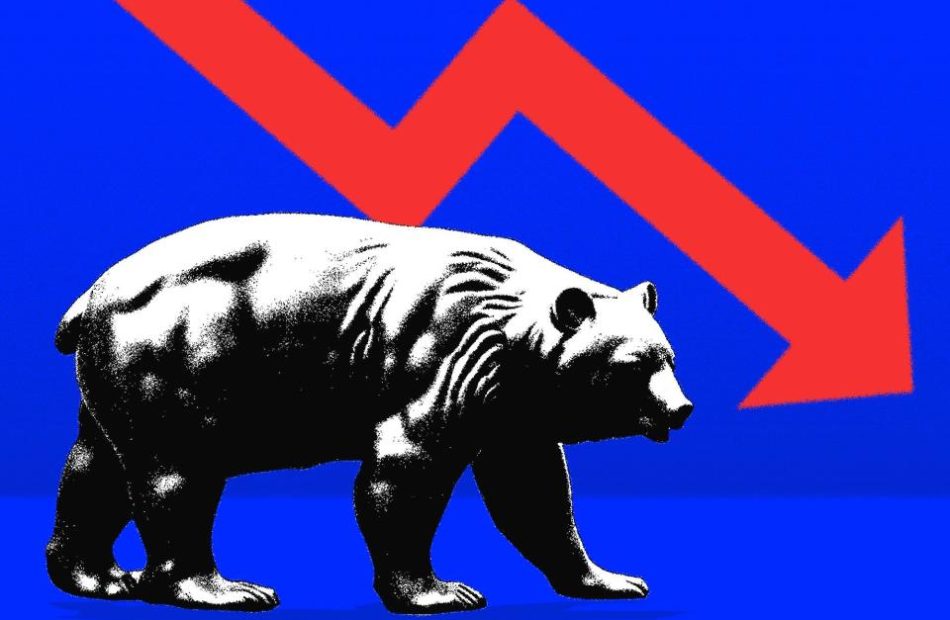A booming stock market isn't stopping bears from sounding the alarm on a potential crash. Here's what they're worried about.
-
Bearish strategists are warning of a potential stock market plunge as the economy cools down.
-
Indicators like the Sahm Rule and job market weakness suggest a looming recession, the bears say.
-
One strategist predicts that a recession could cause a 70% stock market decline amid lofty valuations.
Bearish strategists are sounding the alarm about a potential stock market crash as the economy shows signs of cooling down.
While the stock market doesn’t seem to care about these predictions as the S&P 500 is less than 1% away from hitting record highs, there’s still plenty to be worried about, according to Wall Street’s biggest bears.
Reliable recession indicators like the Sahm Rule have flashed recently, the job market is seeing growth decelerate, and any interest rate cuts from the Federal Reserve may not be enough to prevent a downturn, downbeat forecasters say.
From a possible recession to a 70% decline in the stock market, here’s a roundup of the most recent bearish forecasts coming from Wall Street.
Mark Mobius: Economic warning sign flashes for first time in over 90 years
Billionaire investor Mark Mobius told CNBC this week that the decline in M2 money supply since it peaked in 2022 represents the largest drawdown in the total money supply in nearly a century.
“The main concern is that if the M2 money supply has declined since April 2022 and hasn’t kept pace with economic growth, there could be less capital available for the discretionary spending that has driven the current economic expansion and bull market on Wall Street,” Mobius said.
Mobius recommends investors hold 20% in cash to be ready to buy a potential decline in stock prices, and
“Look for companies with little or no debt, moderate earnings growth, and high return on capital, and get ready to re-enter the market,” Mobius said.
Steve Hanke: A recession is likely in early 2025
Economist Steve Hanke warned this week that in addition to the contraction in M2 Money Supply highlighted by Mobius, other signs suggest a recession will arrive in early 2025.
“We will enter a recession either late this year or early next year in the United States, and that’s why we think the inflation numbers will keep coming down,” Hanke predicted in an interview with the wealth advisory firm Wealthion.
Those micro-level indicators include the steady rise in the unemployment rate to 4.3%, representing the highest level since the pandemic, an ongoing slowdown in retail sales, and sluggish activity in the housing market and manufacturing activity.
“If you look at the microdata, it’s kind of consistent with this macro monetary picture that I just gave you of slowing down, going into recession, inflation continuing to come down. That picture is, if you look micro, individual companies or sectors of the economy… the sectors look like a slowdown is in the wind,” Hanke said.
Jon Wolfenbarger: A recession could send stocks plunging 70%
Investors could experience a 70% decline in the stock market if a painful recession hits the economy at a time when valuations are elevated, according to Jon Wolfenbarger, founder of BullAndBearProfits.com.
In a recent note, Wolfenbarger highlighted that it’s not just an inverted yield curve and flashing of the Sahm Rule that suggests a recession is imminent.
There are other under-the-radar signals that suggest the jobs market is cooling in a way that is consistent with economic downturns, according to Wolfenbarger.
That includes the year-over-year rate of change in employment growth dropping to 0%. In the past, a negative reading in the year-over-year change in employment growth has signaled a recession, according to Wolfenbarger.
Another job market concern is the ongoing decline in average weekly hours worked, which sits at around 34.2. Any further decline in this indicator would flash a signal not seen since 2008 and 2020, two years when a painful recession hit the US economy.
Finally, a steady decline in manufacturing employment, based on the ISM Index, suggests the unemployment rate could have more room to run, according to Wolfenbarger.
Considering elevated stock market valuations, these factors suggest to Wolfenbarger that the S&P 500 could ultimately fall as much as 70% from current levels.
The counterpoint: A bullish take to balance out the doomsayers
While the job market shows signs of slowing, not everyone on Wall Street is concerned about a potential recession or stock market crash.
Goldman Sachs called recession fears “overblown” in a recent note, highlighting that US consumers remain strong and corporate earnings growth continues to deliver.
“Reports of concern over the US consumer are greatly exaggerated,” Goldman’s Jan Hatzius said. “Our quantitative measure of sentiment around the consumer on earnings calls improved sequentially, sales growth at consumer-facing companies slowed bt remains healthy, and real income growth appears solidly positive across all income groups.”
And it doesn’t hurt that the Federal Reserve is shifting to a more dovish stance, with imminent interest rate cuts looking likely.
The bank also said that trillions of dollars of cash on the sidelines could flood the stock market and push the S&P 500 7% higher to 6,000 once investors know the winner of the Presidential election in November.
“SPX $6K – new highs in Q4, led by November and December months,” Goldman Sachs said.
Read the original article on Business Insider


Leave a Reply